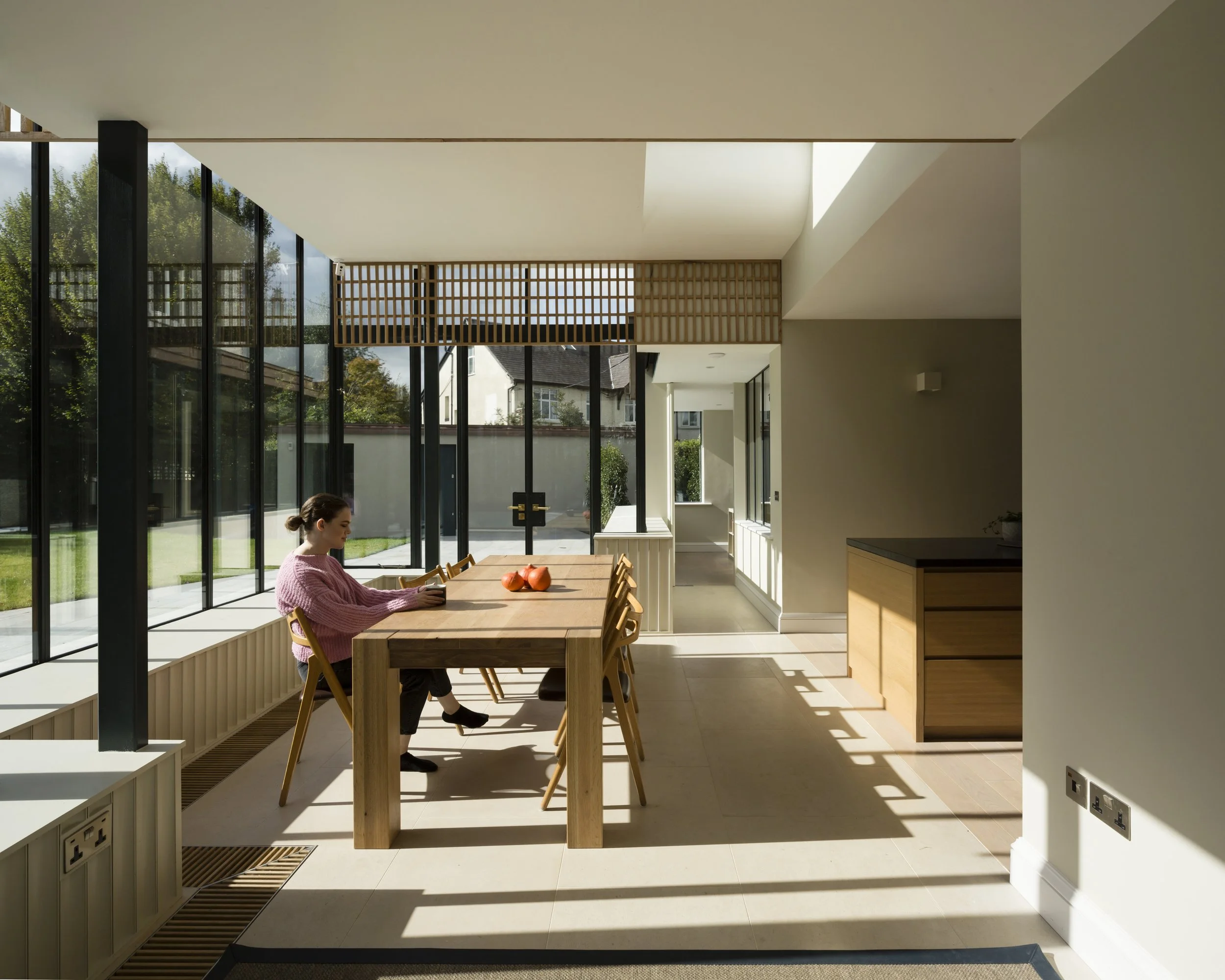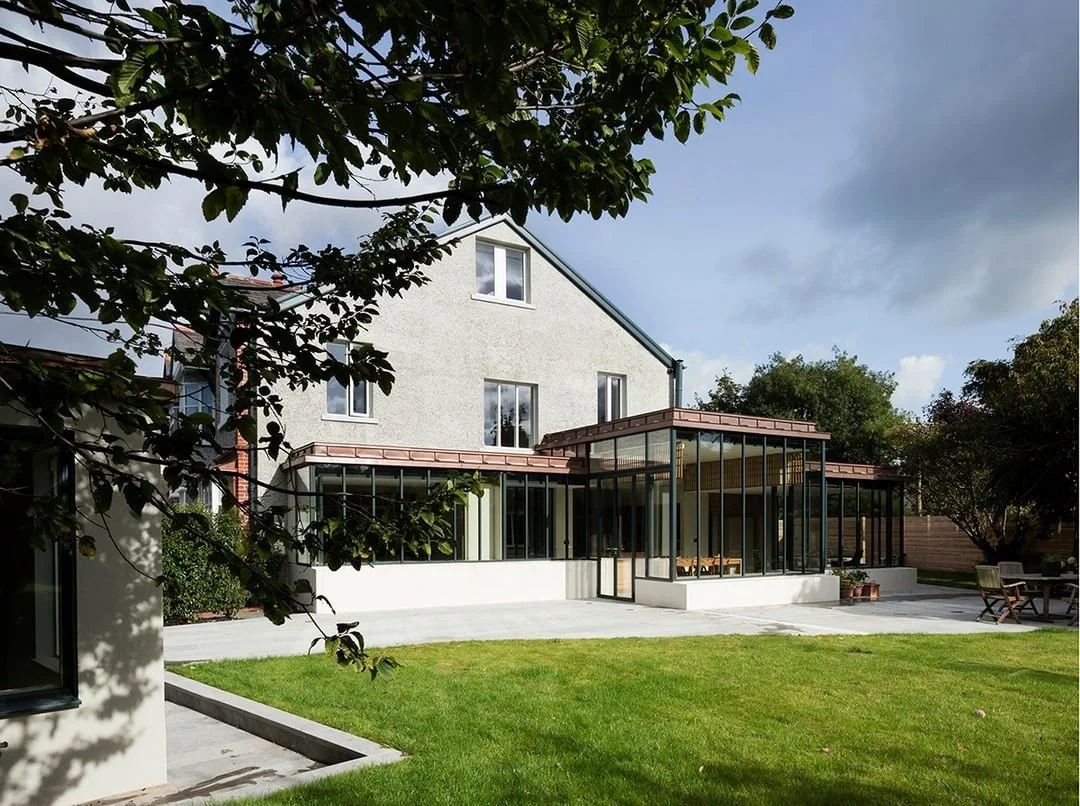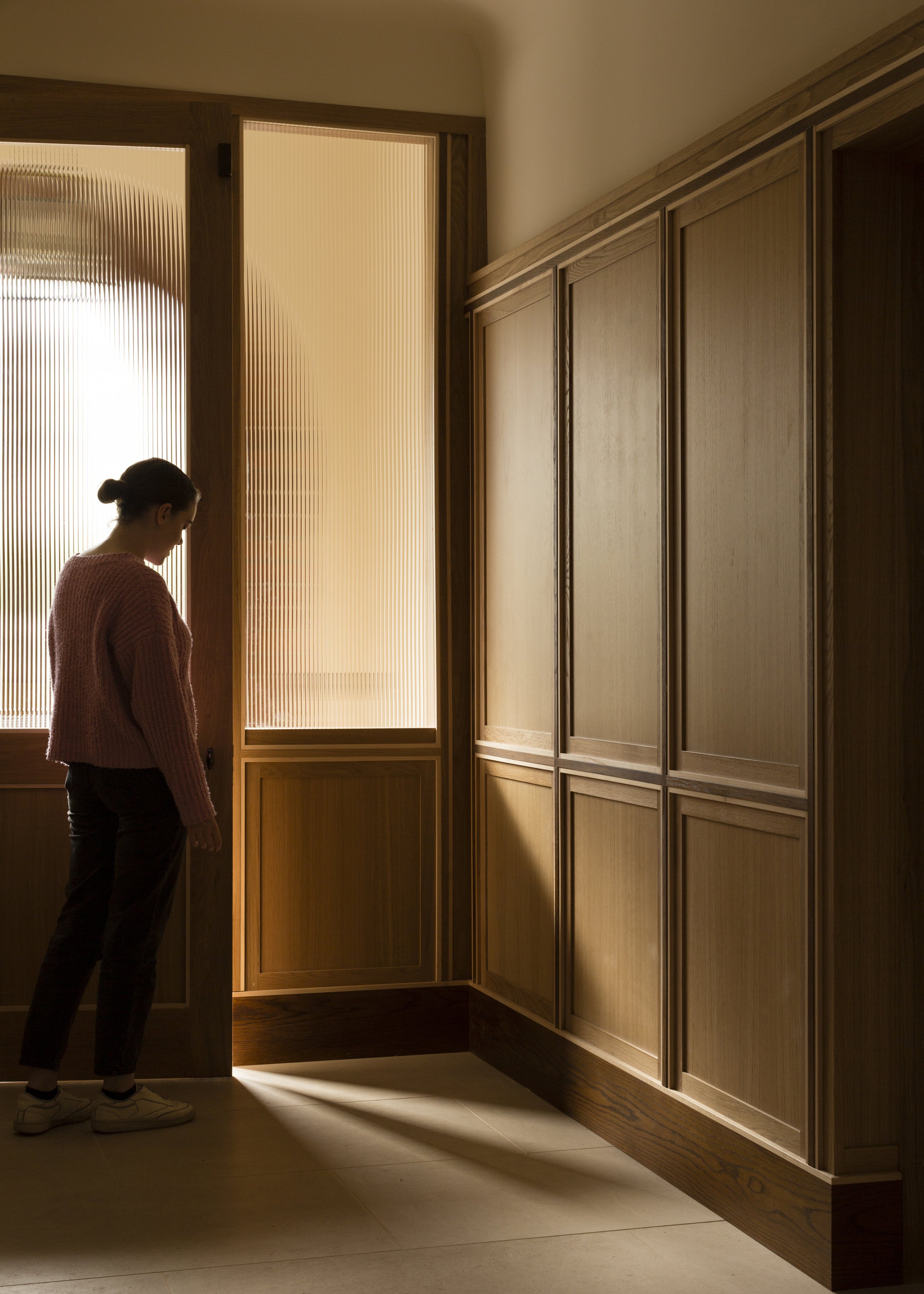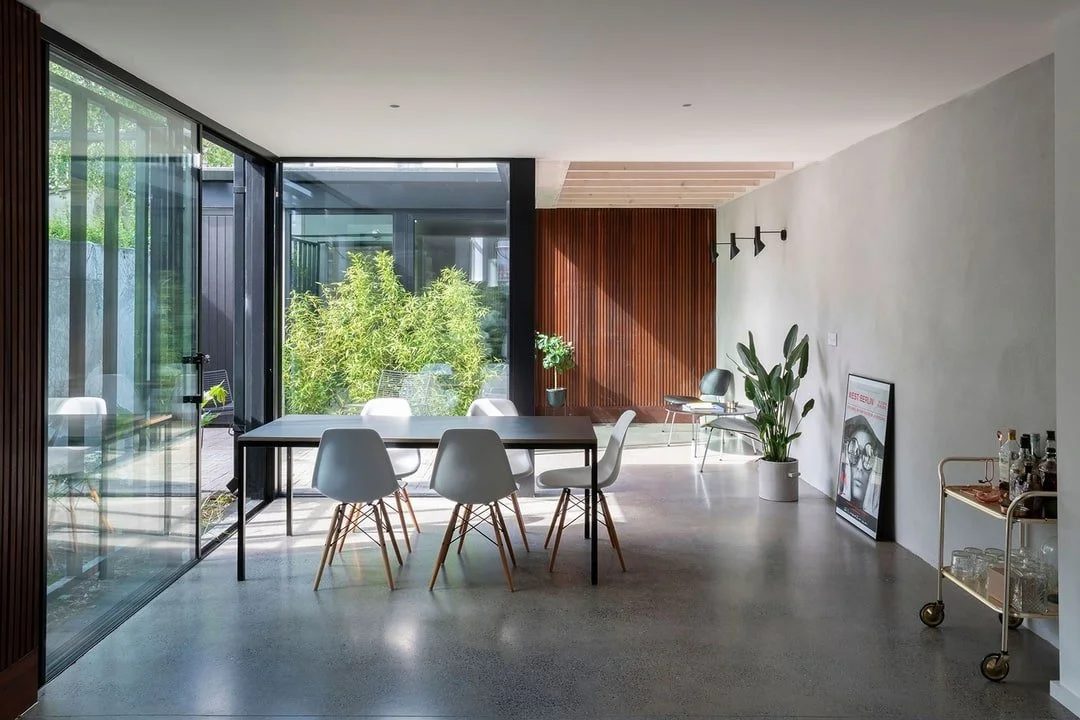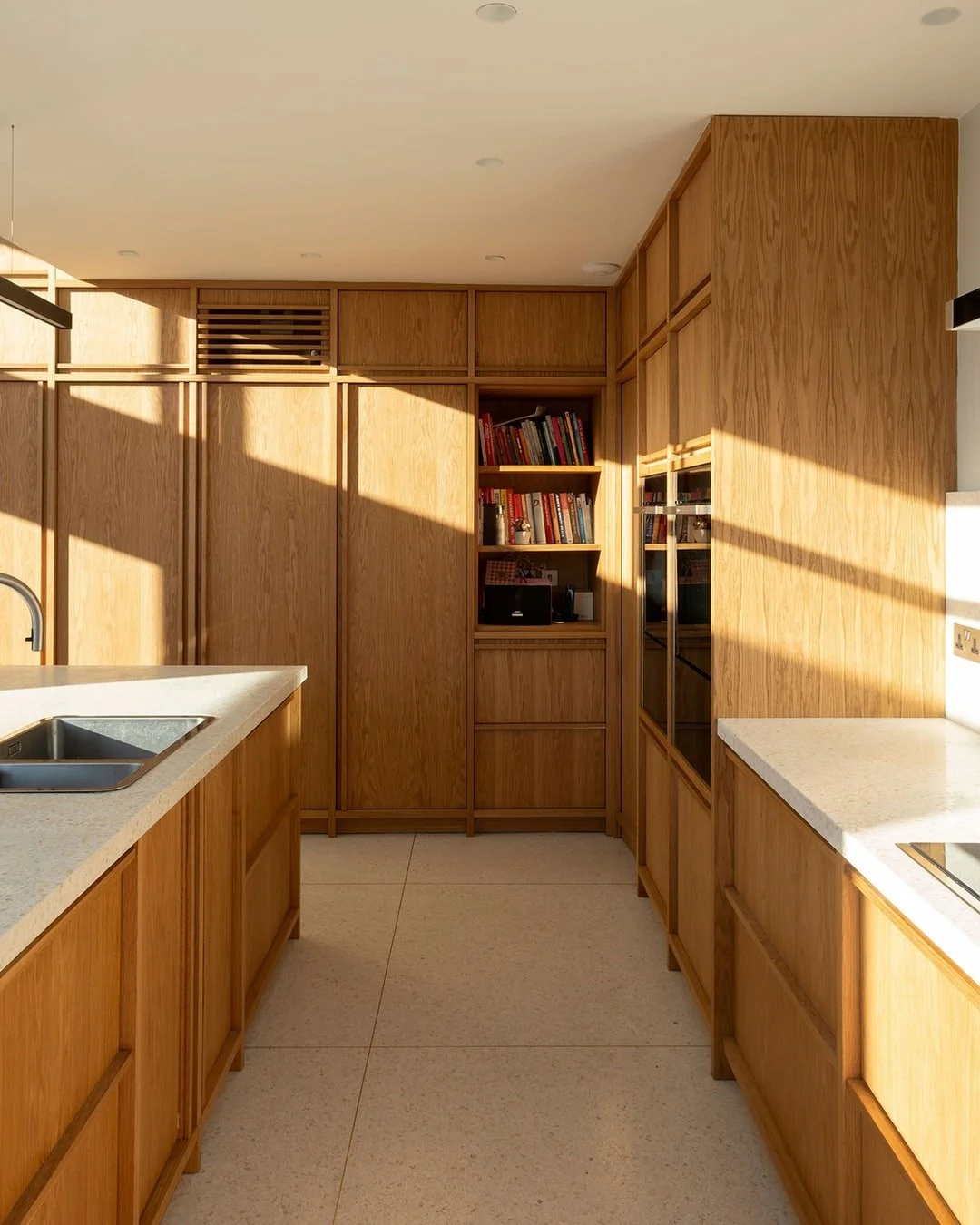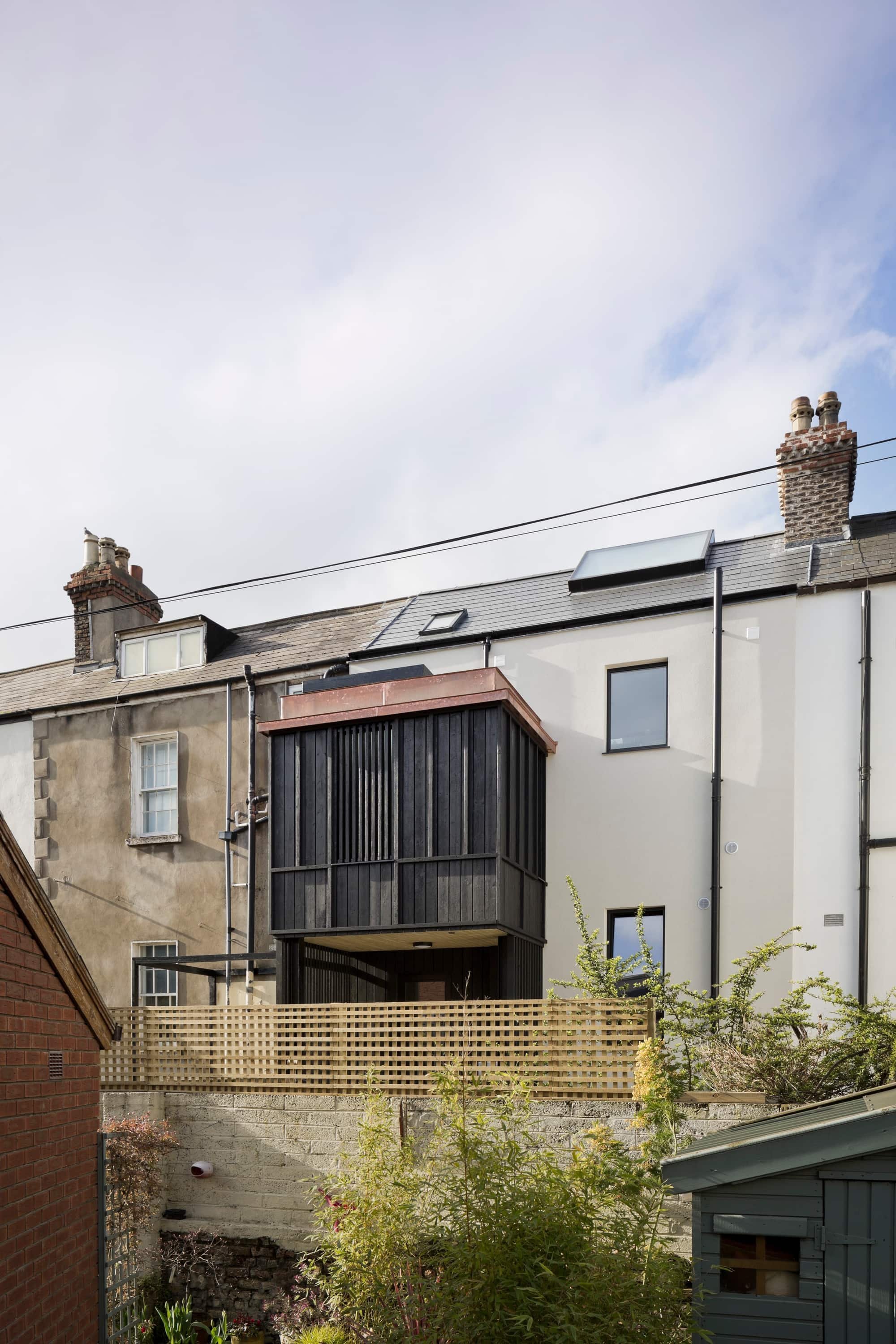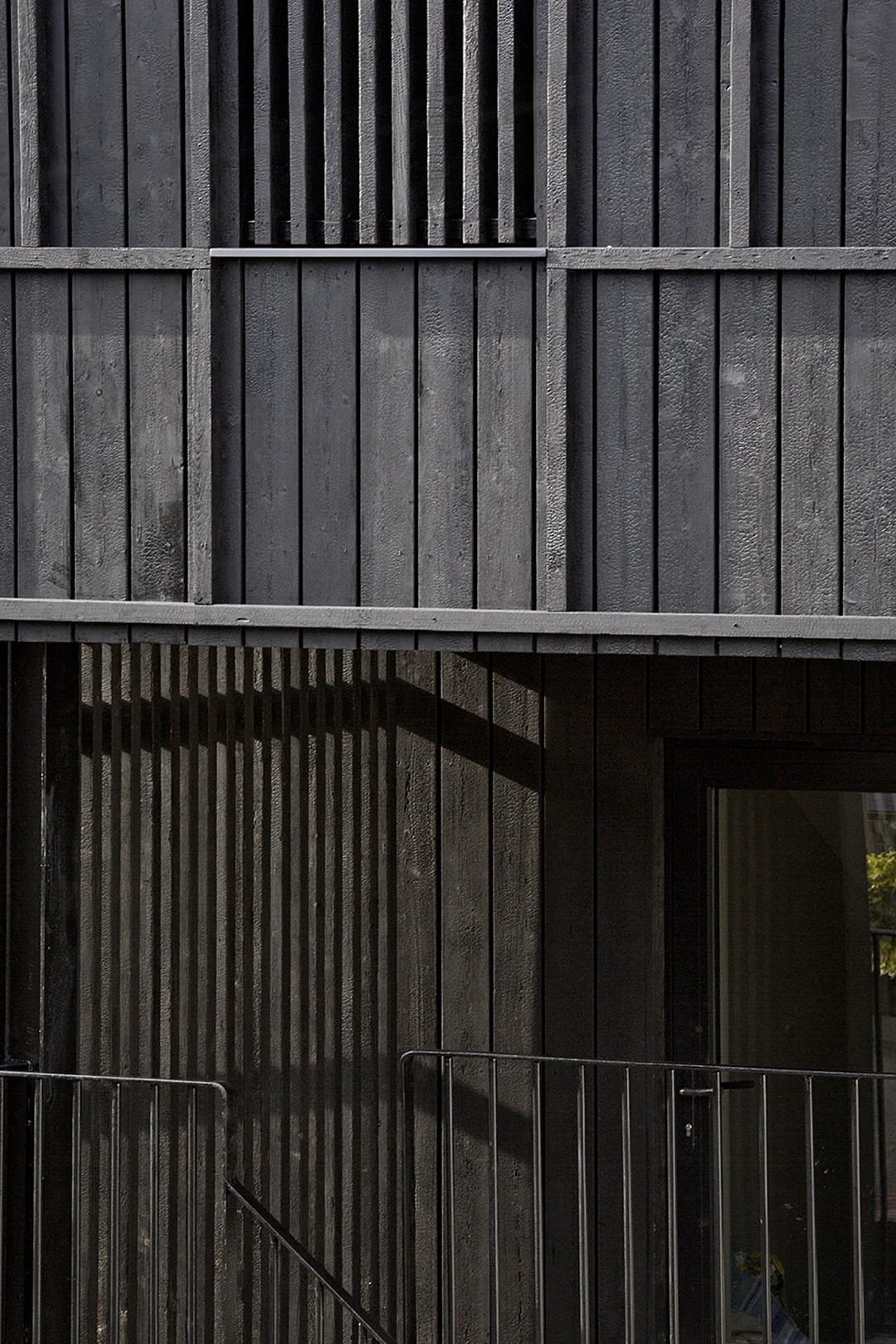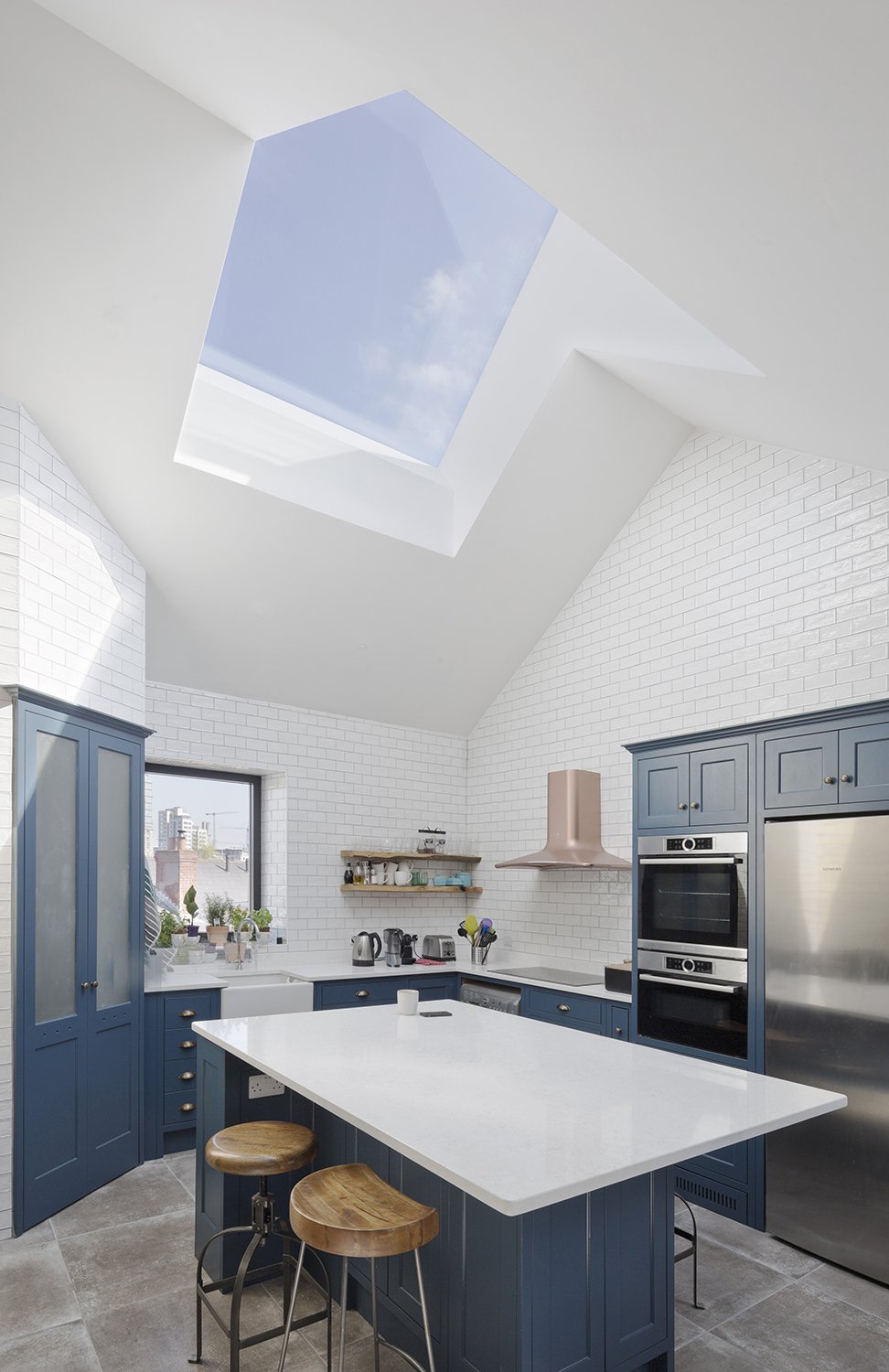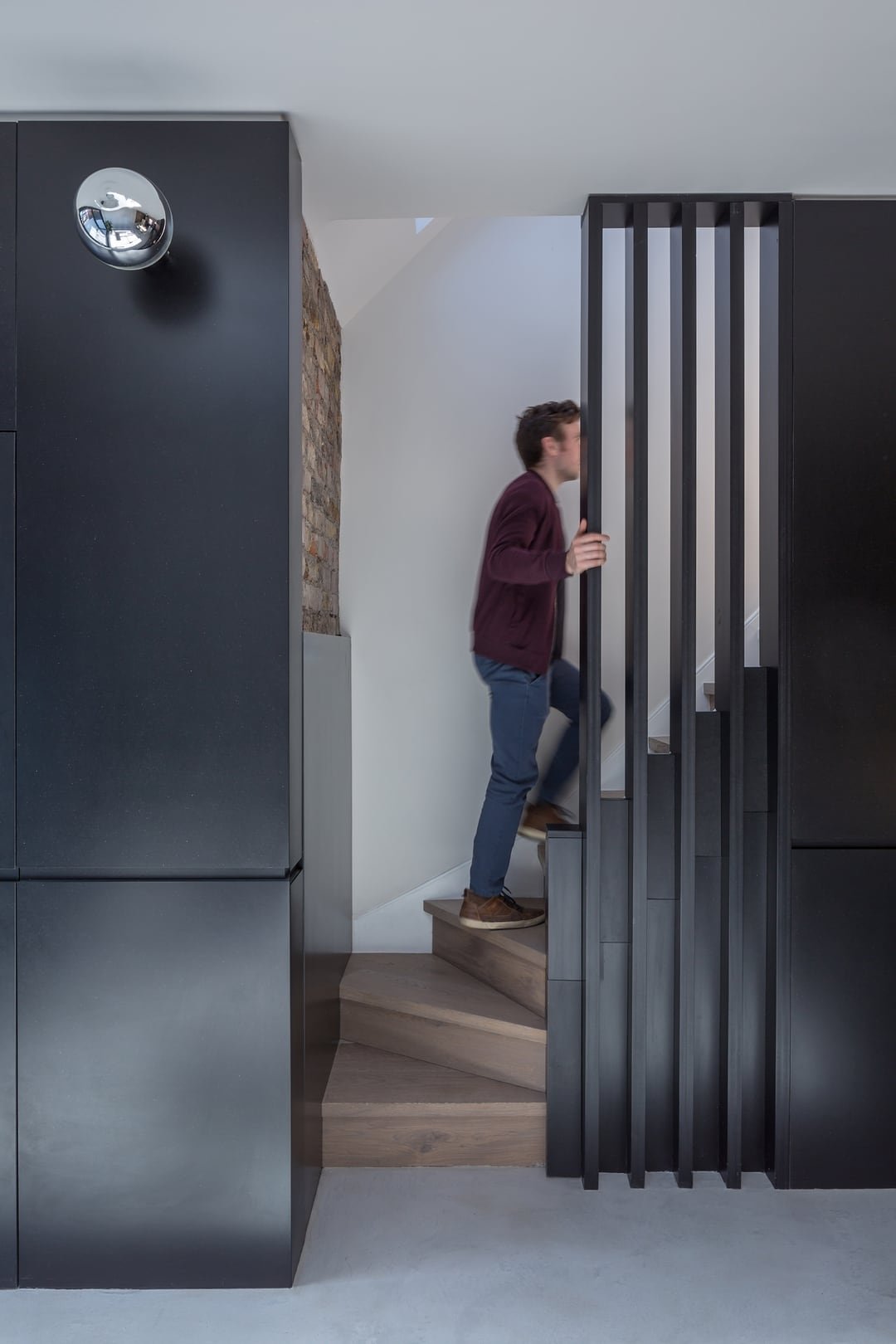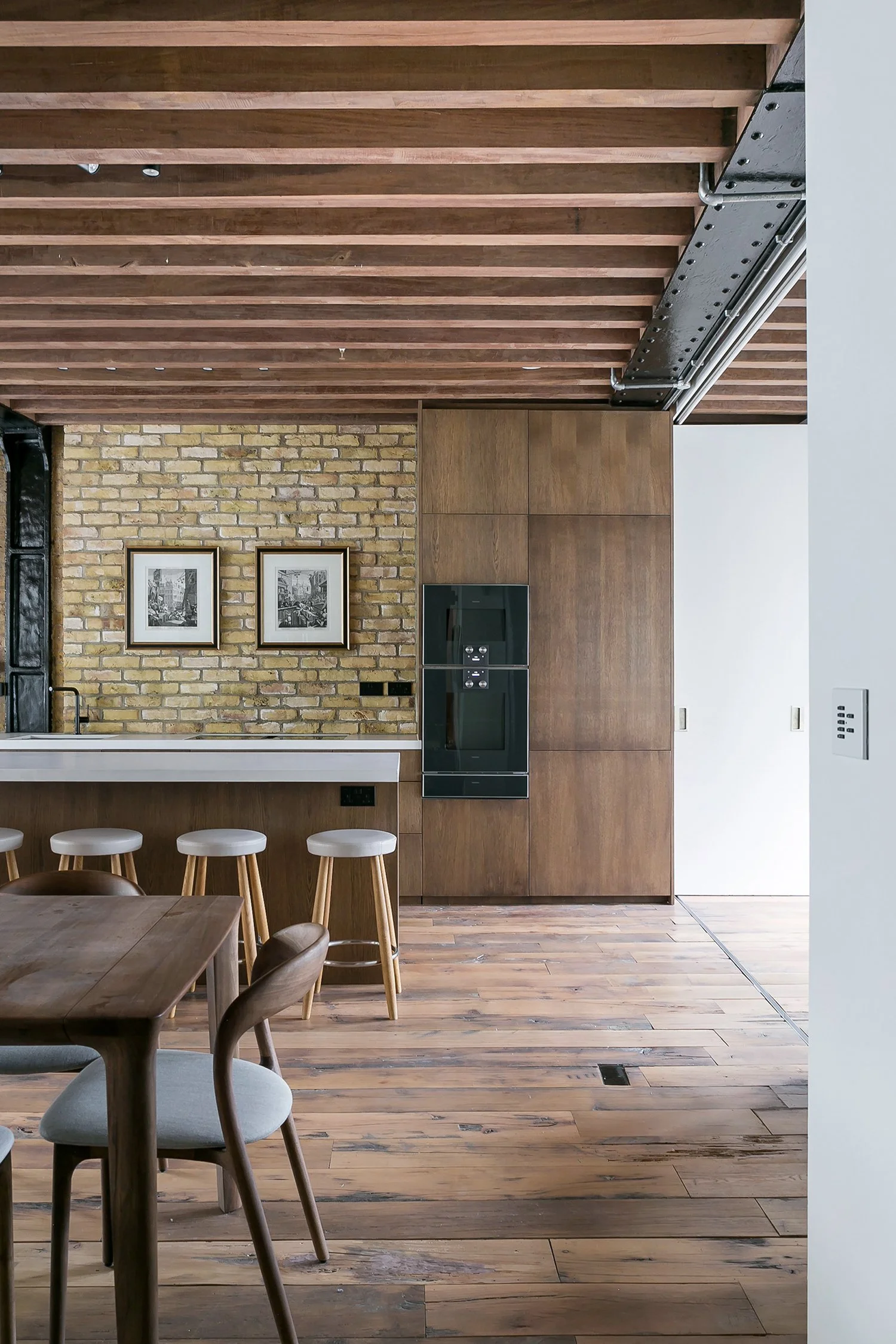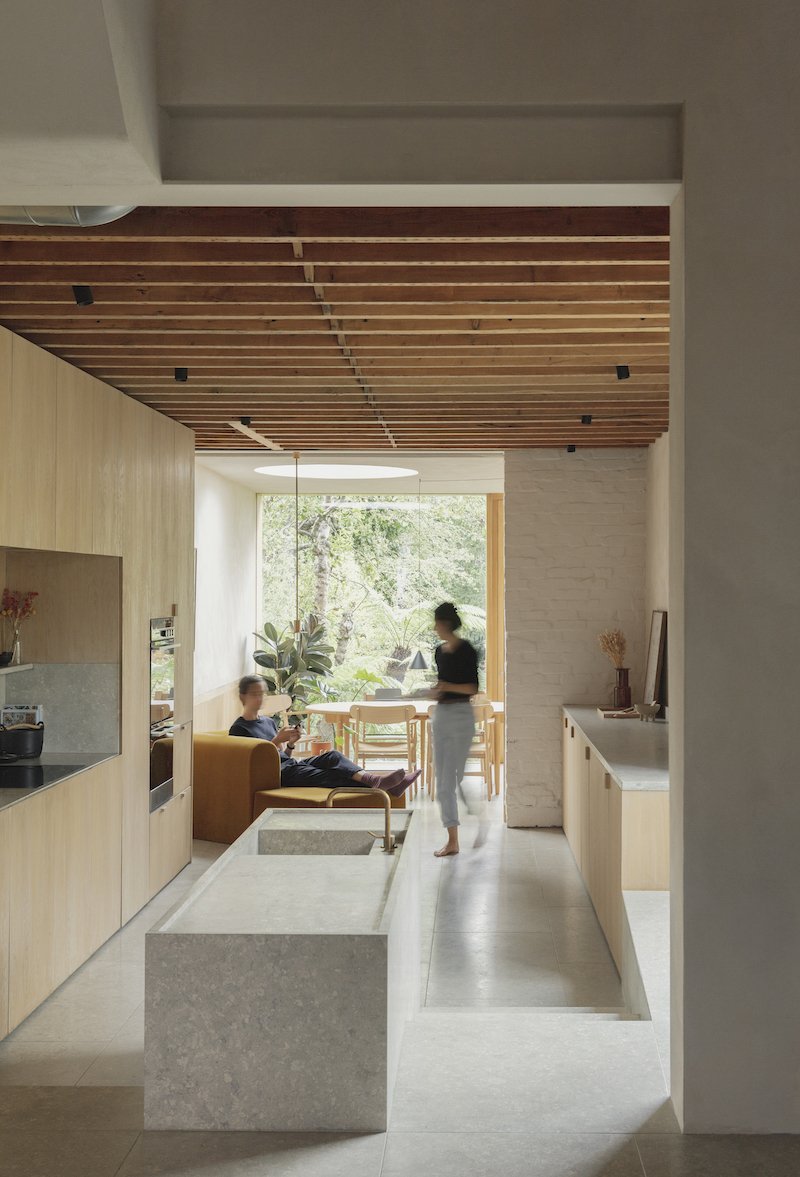Listening, discovering and the power of empathy
Glass Ribbon House by Scullion Architects
You might be familiar with the quote about the power of empathy and ‘walking a mile in another man’s shoes’ from Harper Lee’s seminal book ‘To Kill a Mockingbird’. When you listen to Declan Scullion from Scullion Architects talk about his practice, it’s a sentiment that resonates when it comes to their clients.
‘We spend a lot of time listening, discovering what it is like to be that person,’ he enthuses. ‘If the client is a retired couple, what will they need from their home? What if the client has four teenage children, or live with one elderly relative? Or if they are away from home a lot?’
Glass Ribbon House by Scullion Architects
Glass Ribbon House by Scullion Architects
Scullion’s understanding isn’t limited to the number and size of rooms, and their function. ‘We don’t propose a design response until we’ve understood the client’s priorities in a deeply empathetic way. We don’t dismiss any of their considerations,’ he explains. ‘Together we develop a design that will transform the way they live.’
Portobello House by Scullion Architects
Dublin-based Scullion Architects was established in 2016 and has grown to a design team of four. A passing glance at their portfolio of work confirms their abilities to listen and relate closely with their clients. From the studied calmness of their Portobello, Dublin house to the quirky Japanned larch façade of the Grand Canal Street project, or the modest modernity imbued in Blackrock House, it’s clear that the architects do not impose their own stylistic peccadillos. There is a lack of ego in their work. ‘We are very happy to work on projects that no-one notices, and we are equally happy to work on high-profile projects with a significant public presence’
Declan describes the process of design development like a craftsman, with an almost reverential approach to service. ‘We work really hard to understand the client’s needs and then we start an exploration of ideas. We test a lot to reveal what works and then we refine those responses.’ The architect emphasises the need to work closely and collaboratively with builders, and graciously acknowledges their importance. ‘A good building will last a long time, and a good relationship with the builder is a key ingredient’. Declan uses one of the practice’s recent projects to articulate his point. The Glass Ribbon is an extension to a 1930s house in suburban Dublin. Its beautifully detailed, thin steel-frame is redolent of the era but updated for the 21st Century. ‘It was a reasonably ordinary 30s house,’ Declan acknowledges. ‘Once we had re-planned the house, we worked closely with contractors and craftspeople to bring it to life. We even visited the joiners’ workshop to see joinery being made. They were co-authors of the project.’
Churchtown by Scullion Architects
The practice’s body of work is a mix of private residential projects and public commissions. Although different, one type enhances their skills in the other. ‘On public projects you don’t get to collaborate with the builders at all. Once you’ve designed it, you are distanced from it,’ Declan points out. ‘That imposes a rigour and a discipline on how you draw and how you communicate. We take that discipline into our work with private clients’.
Scullion Architects benefit from only accepting a small number of commissions each year, with every client having access to Declan. It’s a personal approach that leads to an uncommon level of service.
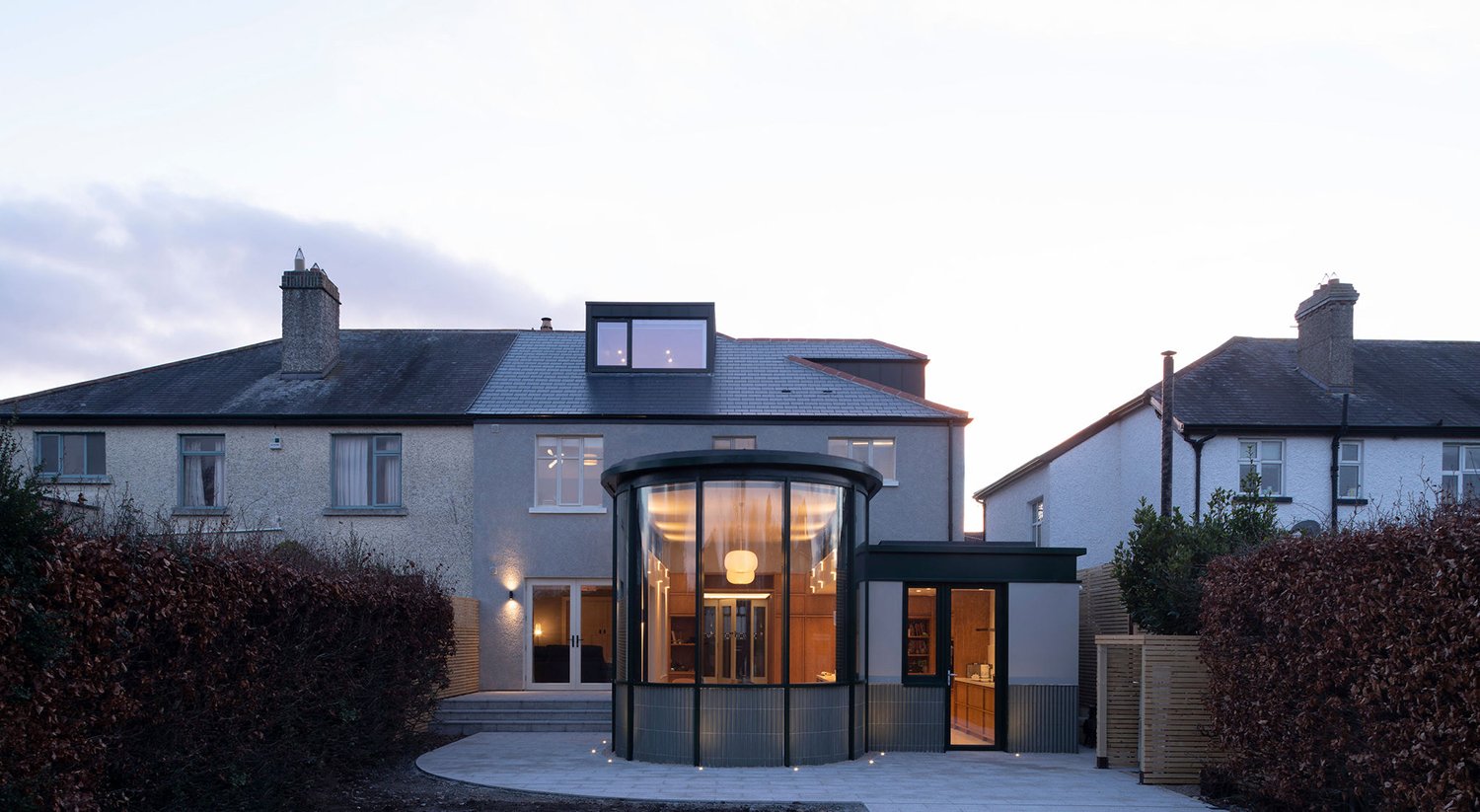

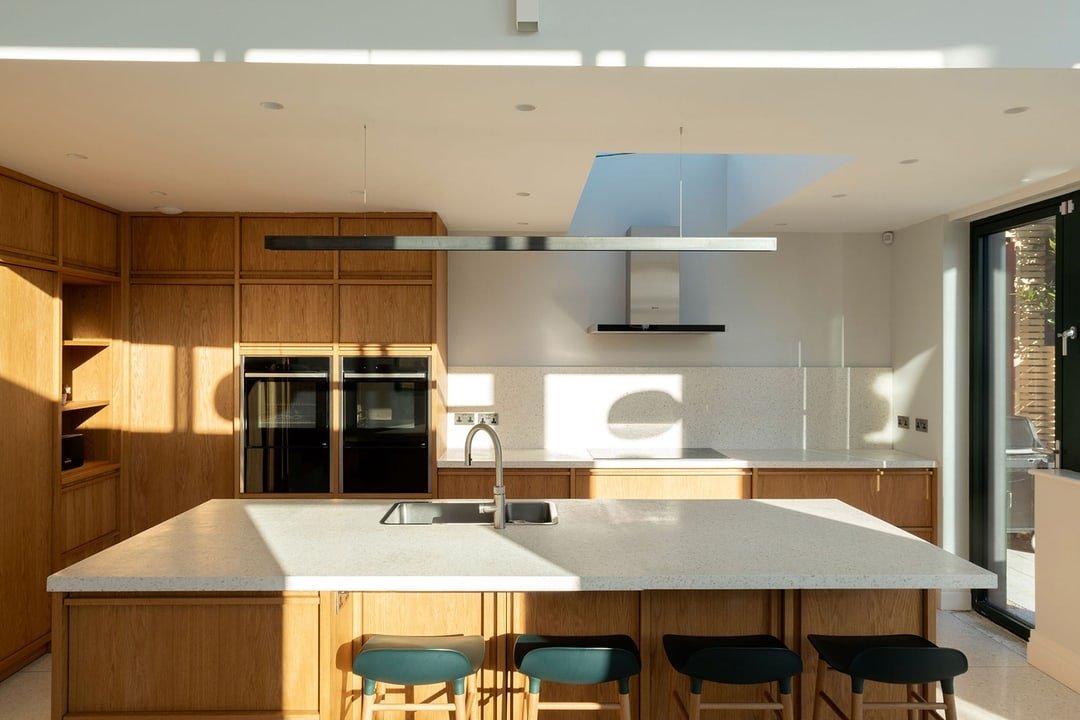
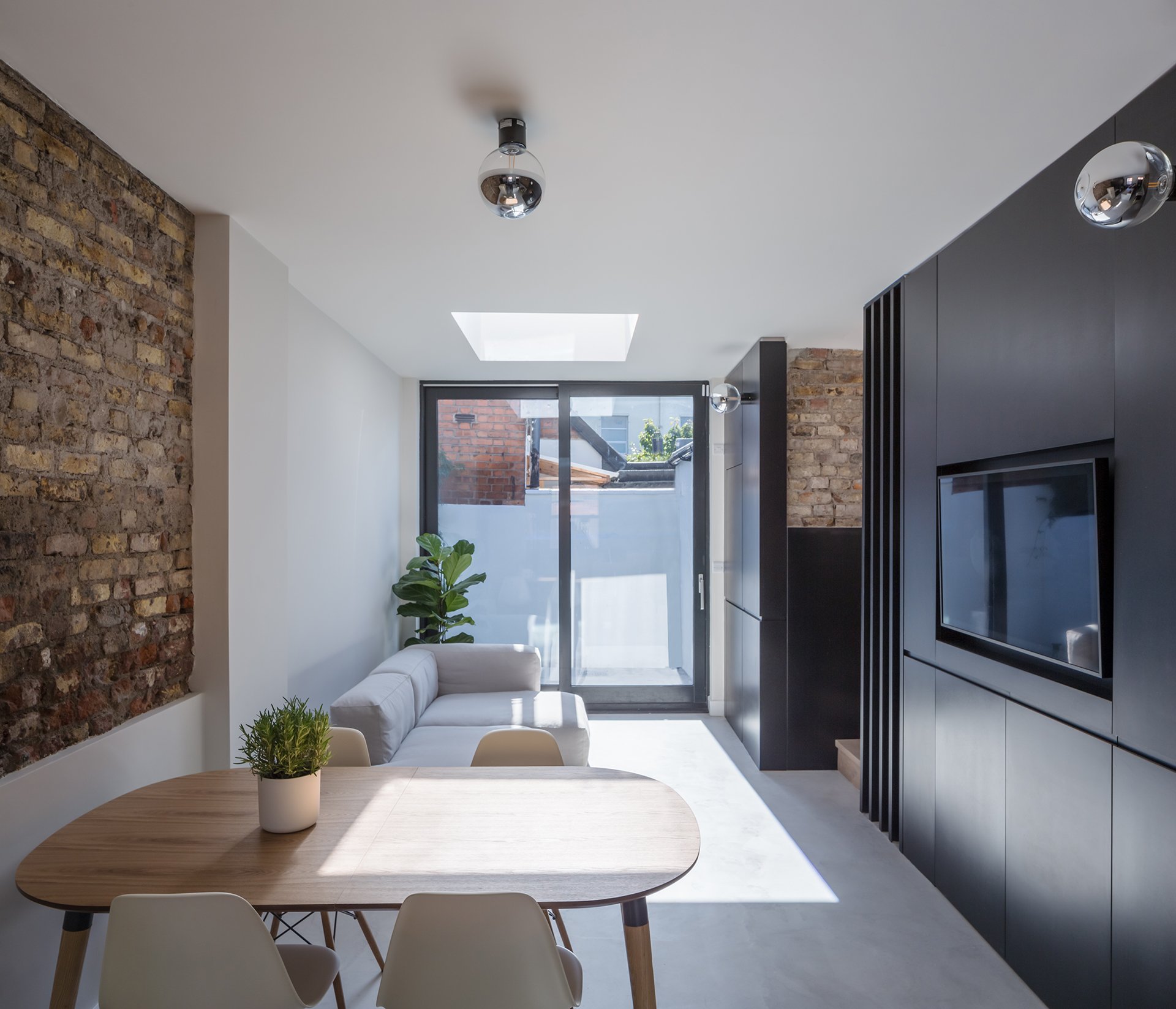
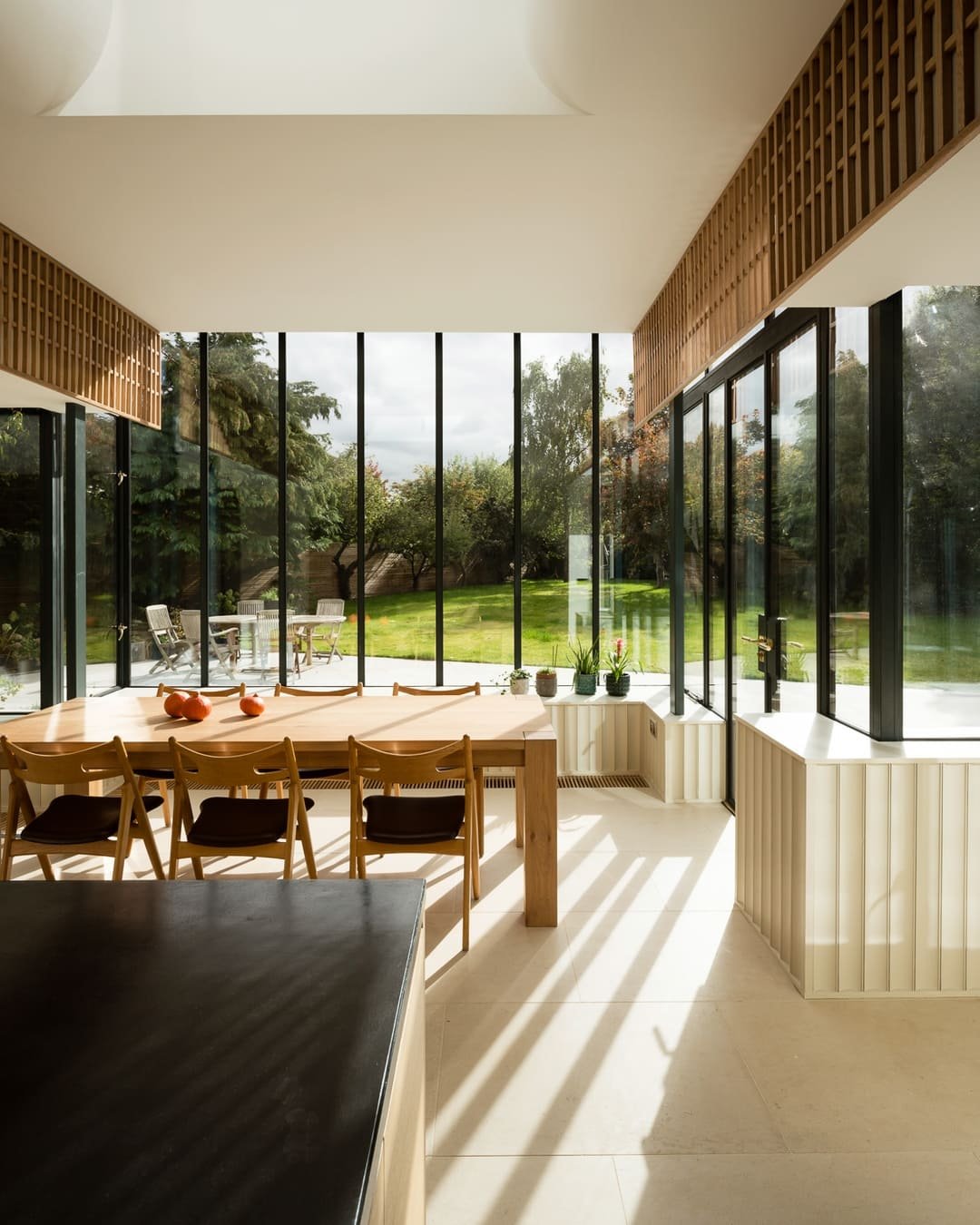
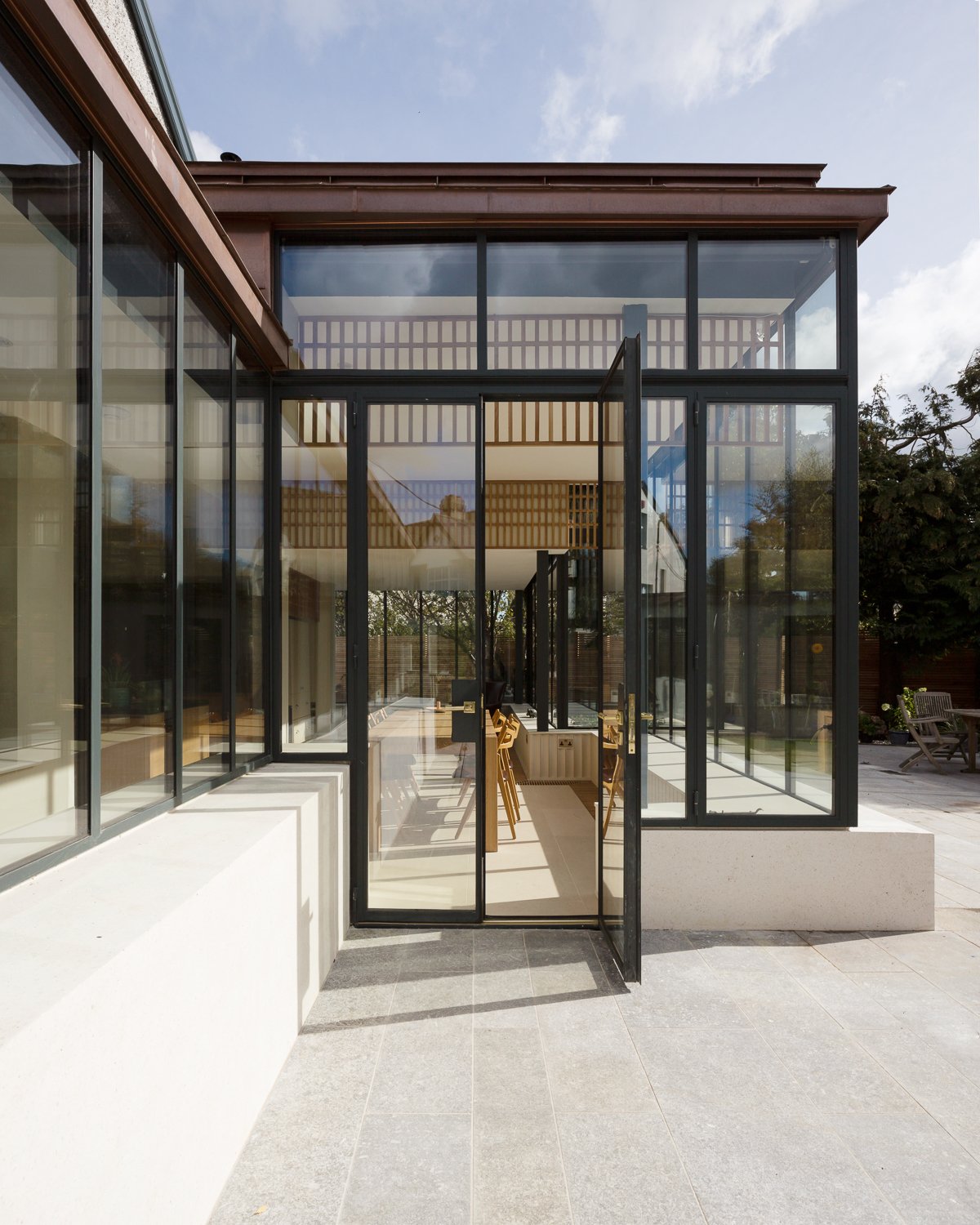

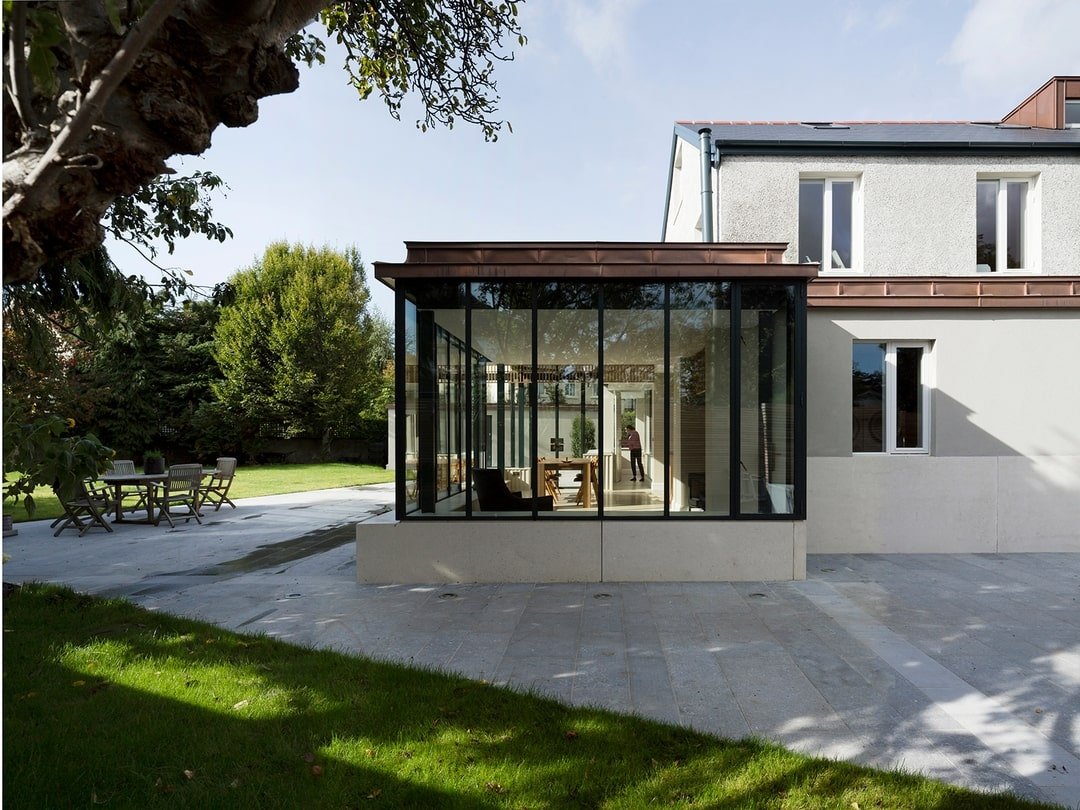
— Written by Christopher at We Design Homes
